Adding a 4th-axis rotary to your CNC router is one of the most powerful upgrades you can make. It introduces true 360° carving, allowing you to engrave, shape, and mill cylindrical objects such as chair legs, chess pieces, or custom rolling pins—all with precision and repeatability. If you own a TwoTrees TTC-450 Ultra, TTC-6050, or similar GRBL-based CNC router, this guide will help you unlock the full potential of a rotary attachment.
Why Add a 4th Axis to a 3-Axis CNC?
A standard 3-axis CNC router moves the tool along the X, Y, and Z axes—ideal for 2.5D and flat relief carving. The addition of a 4th axis, known as the A-axis, adds rotational motion around one of these axes, usually the X-axis. This turns your flat-bed CNC into a true rotary carving system.
In practical terms, the rotary axis lets you engrave objects all the way around without manually repositioning them. It’s perfect for:
- Carving cylindrical wood, acrylic, or resin parts
- Making symmetrical objects like table legs or handles
- Engraving text or textures on round surfaces
- Creating small-batch products for Etsy or craft markets
For hobbyists and small workshops, this upgrade bridges the gap between entry-level routers and advanced 4-axis milling centers—without the cost or complexity of an industrial machine.
Understanding the 4th-Axis Rotary System
A 4th-axis kit generally includes four key parts:
- Stepper motor and chuck assembly: Rotates the workpiece precisely around the A-axis.
- Tailstock: Supports the other end of long or heavy materials.
- Motor driver or interface cable: Connects the rotary motor to your CNC controller.
- Mounting brackets or risers: Used to secure the rotary axis parallel to your machine’s X-axis.
Most TwoTrees CNC routers (like the TTC series) already use GRBL firmware, making it simple to integrate a 4th axis via an extra stepper driver or replace one of the existing axes during setup.
How the 4th Axis Works on a GRBL-Based CNC
GRBL is a popular open-source motion controller firmware that interprets G-code to control stepper motors. By default, GRBL supports three axes (X, Y, Z). However, you can map a rotary axis to replace one linear axis—typically the Y-axis—for rotary operations.
There are two main configurations for GRBL users:
- Option 1: Replace the Y-axis — Use the A-axis rotary instead of Y for specific jobs. This is the most common for budget-friendly setups.
- Option 2: External 4-axis controller — Use a GRBL-compatible board or expansion that supports an additional stepper driver (e.g., a GRBL 1.1f board with 4th-axis breakout).
Most makers choose the first option, since it requires only swapping connections when using the rotary.
Credit: K89C on Youtube
Step-by-Step: Setting Up a 4th Axis Rotary
1. Mount the Rotary Attachment
Place the rotary unit firmly on your CNC bed. Align the chuck parallel with the X-axis, ensuring it’s square to your machine’s travel. Use clamps or T-slot fixtures for stability.
2. Connect the Motor
Unplug your Y-axis stepper cable and connect it to the rotary motor. On most TwoTrees CNC routers, the connectors are labeled clearly and can be swapped directly. For external drivers, connect the rotary’s stepper to the A-axis port.
3. Configure GRBL Settings
Use a G-code sender like Candle, LaserGRBL, or UGS (Universal Gcode Sender) to adjust GRBL parameters.
$100=200.000 (X steps/mm)
$101=200.000 (Y steps/mm)
$102=200.000 (Z steps/mm)
In rotary mode, the “steps per revolution” setting for the replaced axis (often Y) must match the stepper and microstepping configuration. For example, if your rotary has 200 steps/rev and 16x microstepping, one full rotation equals 3200 steps.
To calibrate: mark your workpiece, run a 360° command, and measure the actual rotation. Adjust $101 until one revolution equals a full rotation in practice.
4. Zero and Test
Before running any job, jog the rotary to your starting position, set work zero, and run a simple engraving test. Always double-check Z-clearance—rotary jobs tend to lift the workpiece higher than flat jobs.
Software Workflow for Rotary Projects
Once the hardware is ready, your CAM software must generate toolpaths for wrapped or cylindrical surfaces. Common workflows include:
- Fusion 360: Use the “Wrap” function in the Manufacture workspace or a rotary toolpath in the multi-axis module.
- VCarve / Aspire: Enable the “Wrapped Rotary Job Setup” and define your cylinder diameter.
- Easel or Candle: Use a rotary plugin or convert flat G-code using a wrapping script (e.g., “Flat2Rotary” converters).
For GRBL users, make sure your post-processor outputs standard G-code compatible with your controller—avoid advanced rotary G-codes (A-axis motion) unless your firmware supports them.
Popular 4th-Axis CNC Project Ideas
- Custom rolling pins or engraved dowels
- Chess pieces and small figurines
- Table legs and stair balusters
- Personalized wooden mugs or cups
- Engraved pipes or fluted columns
Rotary projects are ideal for makers looking to sell unique, 360° carved items online or at craft fairs. Combining GRBL-based precision with a rotary attachment opens up product categories normally out of reach for hobby routers.
Choosing the Right 4th Axis for Your Machine
Before buying a rotary kit, confirm compatibility with your CNC router’s working area, electronics, and firmware. Look for:
- Chuck Size: 65 mm for small workpieces, 80–100 mm for larger parts.
- Motor Type: NEMA 23 stepper motors for GRBL-based routers like the TTC-450 and TTC-6050.
- Torque: At least 2.0 N·m for dense hardwoods or metals.
- Tailstock: Ensures balanced support for long materials.
TwoTrees offers plug-and-play rotary axis kits designed for the TTC series and other GRBL-compatible routers, ensuring seamless integration with minimal wiring changes.
→ Browse TwoTrees Rotary Axis Kits
Tips for Successful Rotary Carving
- Always secure both ends of your workpiece using a chuck and tailstock.
- Use slower feed rates for cylindrical carving to prevent chatter.
- Check for motor binding or skipped steps during long rotations.
- Start with simple shapes before progressing to full 3D sculptures.
- Use sharp bits—ball nose and tapered end mills work best for rotary detail carving.
Conclusion: Turn Your CNC Router into a 360° Carving Machine
Adding a 4th-axis rotary to your GRBL-based CNC router opens up an entirely new dimension of creative work. Whether you’re engraving rolling pins, crafting detailed figurines, or producing custom furniture components, the rotary axis lets you machine designs that flat carving can’t achieve.
For makers using TwoTrees TTC-series CNC routers, rotary compatibility is straightforward, affordable, and incredibly rewarding. Once you’ve tried 360° carving, you’ll wonder how you ever worked without it.






